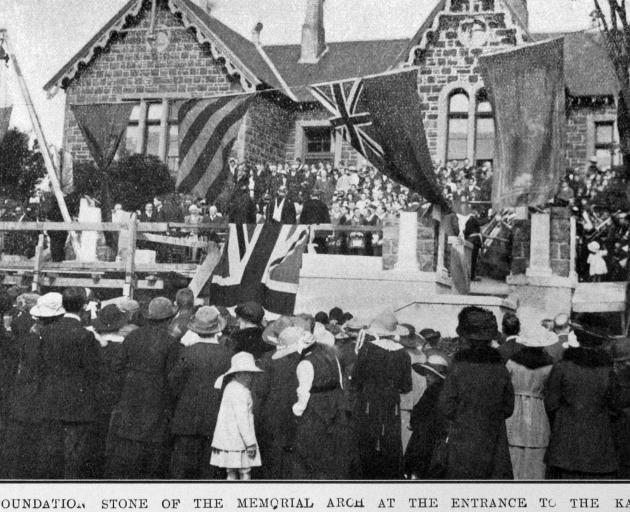
The aspect of the day as a festival of Remembrance was signalised with unique vividness by the ever-memorable sepulture of the Unknown Warrior in Westminster Abbey a year ago.
The inspiring idea of those august obsequies has captured the imagination of the world, and a similar symbolic ceremony will be performed in America today.
The observance of two minutes’ stationary silence is related to the aspect of Armistice Day as a festival of Remembrance.
Perhaps in regard to this memorial ritual the overseas communities have something to learn from the heart of the Empire. The sudden stillness which fell upon the vast metropolis at the appointed time last year has been described as an amazing phenomenon.
And Armistice Day is a festival of Peace. This aspect, unlike the others which we have mentioned, is more closely related to the future than to the past. Despite the victory and the relief, the noontide of November 11,1918 did not usher in a state of permanent and worldwide peace
The subsequent negotiations and treaties did not remove — perhaps they did not materially minimise — the perilous possibilities of future warfare.
The third anniversary of Armistice Day is also the eve of the assembling of the Disarmament Conference at Washington: an auspicious circumstance fraught with magnificent hope for the amelioration of international relationships.
Atomic possibilities
The study of the “mighty atom” continues to open up fascinating possibilities. Professor Richardson, in a striking address before the British Association expressed the opinion, not uninteresting to New Zealanders, that the enormous and far-reaching importance of the discoveries being made at Cambridge by Sir Ernest Rutherford, formerly of this dominion, in which he was born, cannot be overestimated.
The professor said the amounts of energy which had this far been released are in themselves small, but they are enormous in comparison with the minute amounts of matter affected. If these effects can be sufficiently intensified there appeared to be two possibilities: either they would prove uncontrollable, which would presumably spell the end of all things — or they would not.
“If they can be both intensified and controlled, we shall have at our disposal an almost illimitable supply of power, which will entirely transcend anything hitherto known.
It may be that we are at the beginning of a new age, which will be referred to as the age of sub-atomic power. We cannot say. Time alone will tell.”
Plasticine advocated
Mr J.A. Valentine, senior inspector of schools in Taranaki, advocates the use of plasticine in teaching young children, as it developed the sense of touch as well as made them more familiar with objects. — ODT, 11.11.1921.












